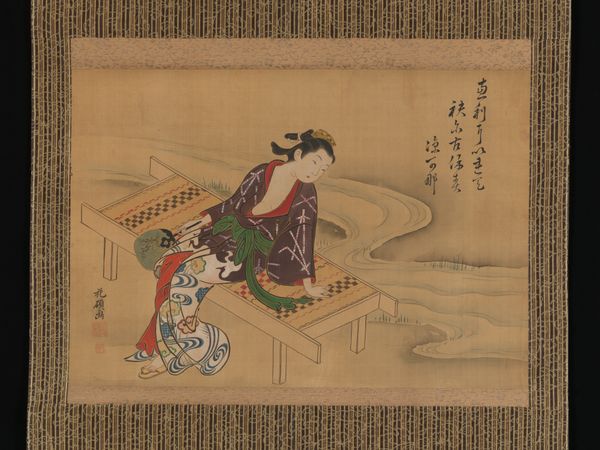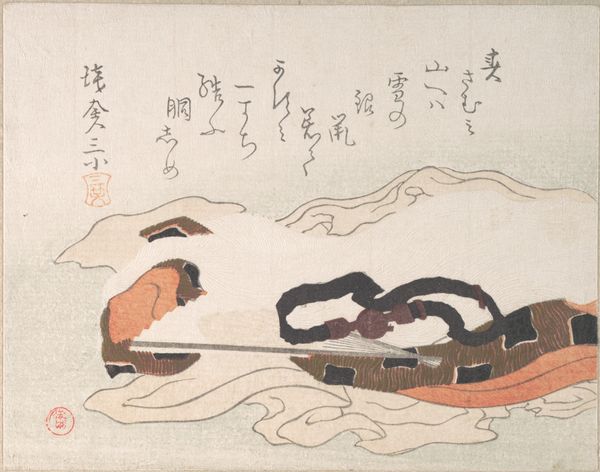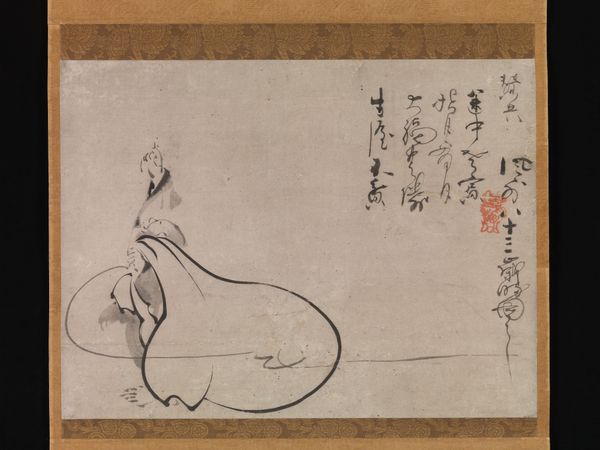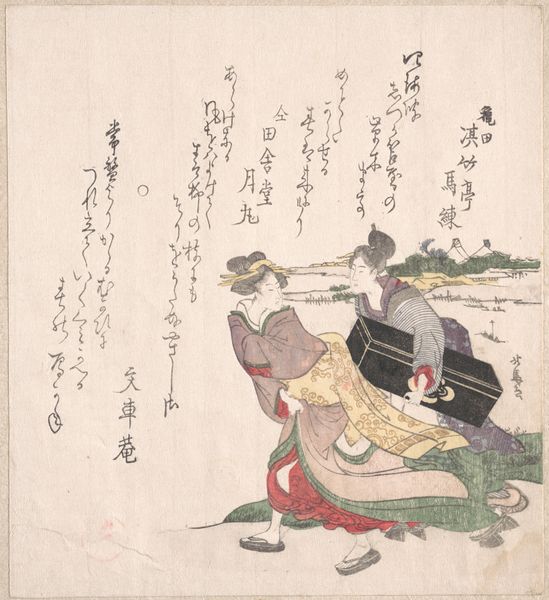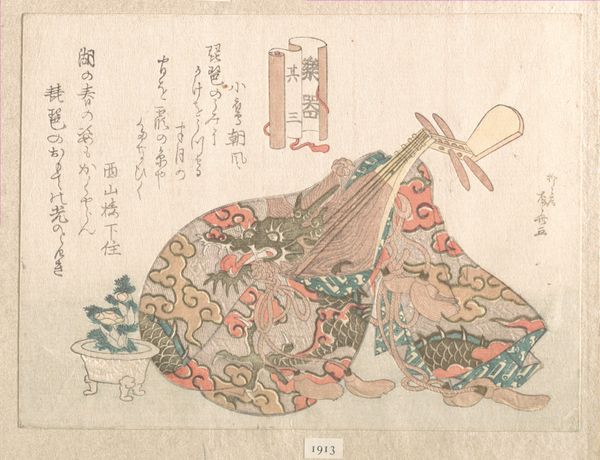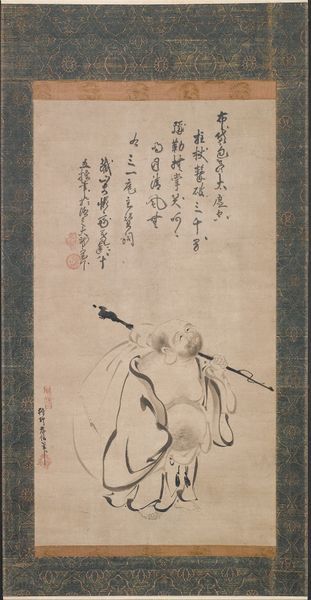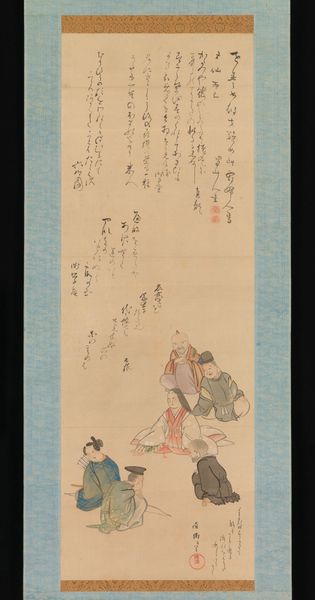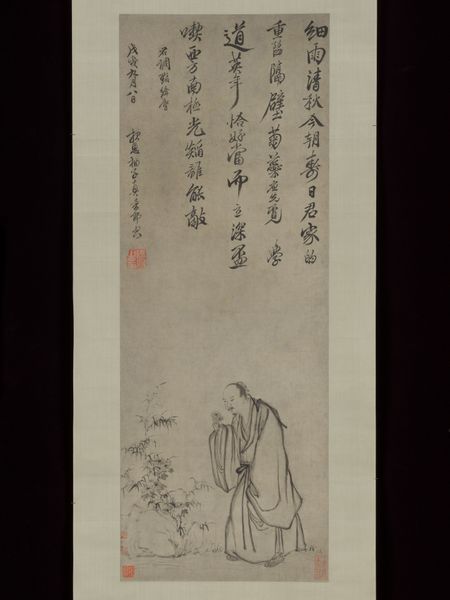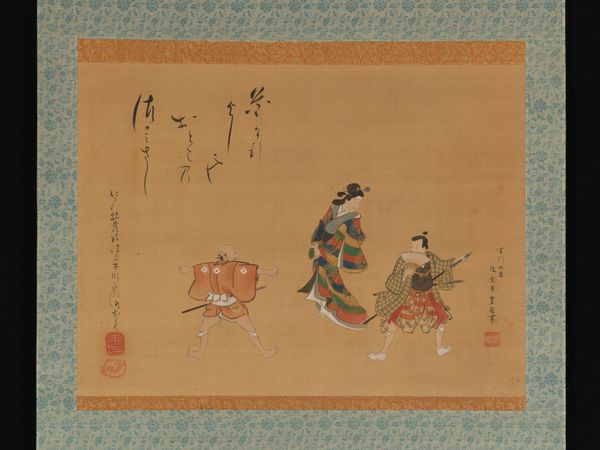
#
aged paper
#
toned paper
#
asian-art
#
sketch book
#
japan
#
personal sketchbook
#
journal
#
sketchbook drawing
#
watercolour illustration
#
storyboard and sketchbook work
#
sketchbook art
#
watercolor
Dimensions: Image: 16 9/16 × 23 7/16 in. (42 × 59.5 cm) Overall with mounting: 53 3/8 × 29 in. (135.6 × 73.7 cm) Overall with knobs: 53 3/8 × 31 1/8 in. (135.6 × 79.1 cm)
Copyright: Public Domain
Curator: This artwork, housed here at the Metropolitan Museum of Art, is titled "Kannon on a Lotus Petal." It's dated 1672 and attributed to Shōzan Gen’yō. Editor: It's incredibly serene. The gentle washes of color, the soft lines—there’s a real feeling of peaceful contemplation. The aged paper really contributes to that feeling, too. Curator: Absolutely. Kannon, a Bodhisattva associated with compassion, floats serenely on a lotus, a potent symbol across cultures, but particularly powerful in Buddhist iconography. This depiction really aligns with Kannon’s role as a reliever of suffering. Editor: What strikes me is the technique. Look at the way the lotus is rendered, almost like fabric draped and folded. It emphasizes the lotus not just as a symbol, but as a crafted, material object supporting Kannon. I’m interested in what kind of paper and pigments Shōzan Gen’yō would have used. That has a big impact. Curator: The art historical context places this work within a larger tradition of Buddhist art, and, interestingly, sketchbooks and personal journals like this give insight into the artist’s practice, moving away from the rigid structures promoted at the court. Editor: That’s exactly it—seeing this as part of a personal sketchbook changes how we perceive it. It hints at process, labor, a direct connection between the artist's hand and the image we're seeing. Less divine pronouncement, more artisan at work. Curator: Though this work appears subtle, we shouldn't overlook the role patronage played in shaping such devotional imagery. Even personal devotional pieces often catered to specific audiences or served specific purposes within religious communities. Editor: I agree—that affects its purpose. But, thinking about the materiality again, this gives viewers a peek into 17th century production processes, pigment acquisition, even paper-making. A historical snapshot available only through material remnants. Curator: I hadn't thought about that specific element before, how the medium preserves a kind of material history. Thanks for that insight. Editor: Likewise! It's these objects—these beautifully crafted sketches—that let us peel back the layers of history, to think about more than just patronage but also material production and spiritual experience.
Comments
No comments
Be the first to comment and join the conversation on the ultimate creative platform.
